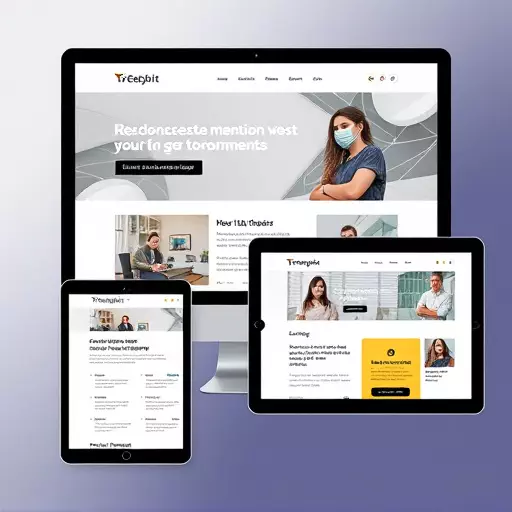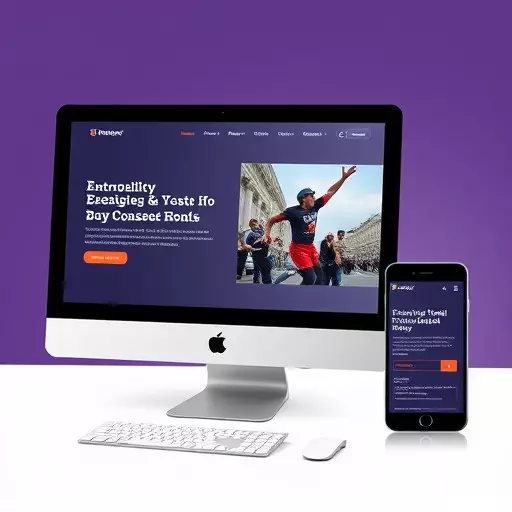In competitive New Jersey digital market, custom website development thrives with a focus on user experience (UX) design. Integrating responsive web design and user interface (UI) aesthetics, developers create intuitive sites that captivate users across devices. This approach enhances accessibility, engagement, brand identity, and conversions, driving business success while setting New Jersey's tech scene apart through innovative UX strategies.
“Unleash the power of digital products with User Experience (UX) design—the art and science behind crafting intuitive, user-centric interfaces. This comprehensive guide explores the essential components of successful UX design, focusing on its impact on custom website development in New Jersey. From understanding user needs to implementing responsive web design and enhancing user interface (UI) elements, we delve into strategies that ensure optimal user engagement across all devices. Discover how these practices transform websites into seamless, engaging digital experiences.”
- Understanding User Experience (UX) Design: The Foundation of Successful Digital Products
- Custom Website Development in New Jersey: Integrating UX Best Practices for Optimal User Engagement
- Responsive Web Design: Ensuring Your Website Delivers a Seamless UX Across Devices
- User Interface (UI) Design: Enhancing the Visual Elements to Support Effective UX
Understanding User Experience (UX) Design: The Foundation of Successful Digital Products

In the realm of digital product creation, User Experience (UX) design serves as the bedrock upon which success is built. It’s not merely about creating visually appealing interfaces; UX design encompasses the entire journey a user undertakes when interacting with a platform or application. By focusing on usability, accessibility, and overall satisfaction, UX designers craft intuitive, efficient, and delightful experiences that keep users engaged and loyal. In today’s digital era, where custom website development in New Jersey is in high demand, understanding UX design principles becomes paramount for businesses aiming to thrive.
Responsive web design, a key component of UX, ensures that these digital products adapt seamlessly across various devices and screen sizes. This adaptability not only enhances accessibility but also boosts user retention by providing a consistent experience regardless of whether someone is accessing the site on their desktop or mobile phone. When combined with thoughtful User Interface (UI) design—which deals with the visual elements and layout—a well-executed UX strategy can drive significant business value, converting visitors into loyal customers.
Custom Website Development in New Jersey: Integrating UX Best Practices for Optimal User Engagement

In the competitive digital landscape, Custom Website Development in New Jersey stands as a cornerstone for businesses aiming to captivate and retain online users. Integrating UX best practices is not just an addition; it’s a strategic necessity. By prioritizing User Experience (UX) design, developers in New Jersey ensure that websites are not only visually appealing but also intuitive and user-friendly. Responsive web design, catering to various devices and screen sizes, is a cornerstone of modern UX, guaranteeing seamless interactions regardless of the platform.
Effective Custom Website Development involves harmonious collaboration between User Interface (UI) and UX design. UI focuses on aesthetics and usability, while UX centers on understanding user needs and behaviors. When these two aspects converge, they create engaging digital experiences that foster user loyalty and drive business growth. New Jersey’s thriving tech scene recognizes this synergy, leveraging innovative UX strategies to deliver top-tier online solutions for businesses seeking to stand out in the market.
Responsive Web Design: Ensuring Your Website Delivers a Seamless UX Across Devices

In today’s digital landscape, a well-crafted user experience (UX) goes beyond simply having a functional website. With the vast array of devices used to access the internet—from desktops to smartphones, tablets, and even smart TVs—responsive web design is no longer an option but a necessity. Custom website development in New Jersey, when combined with responsive strategies, ensures your site delivers a seamless UX across all platforms. This approach means your website adapts gracefully to different screen sizes, resolutions, and orientations, providing users with consistent access to its features and content without compromising functionality or aesthetics.
Responsive web design (RWD) achieves this by using flexible layouts, images, and cascading style sheet media queries. These techniques allow the layout to adjust dynamically based on a user’s device, ensuring optimal viewing and interaction. A well-designed RWD also considers not just visual appearance but user interface (UI) elements, making navigation intuitive and consistent regardless of the screen size. By prioritizing UX in this manner, businesses can enhance user engagement, reduce bounce rates, and ultimately drive conversions, all while maintaining a cohesive brand identity across every touchpoint.
User Interface (UI) Design: Enhancing the Visual Elements to Support Effective UX

In the realm of custom website development in New Jersey, User Experience (UX) design is a cornerstone, and a well-crafted User Interface (UI) design plays a pivotal role in enhancing its effectiveness. UI design focuses on the visual elements that users interact with directly, including layout, typography, color schemes, buttons, forms, and icons. By aligning these components with UX principles, developers can create intuitive, accessible, and visually appealing interfaces.
Responsive web design is a key aspect of modern UI design, ensuring that websites adapt seamlessly to various screen sizes and devices. This not only improves the aesthetic appeal but also boosts usability, especially given the diverse range of devices users employ to access online content. Through careful consideration of user needs, preferences, and behaviors, UI designers can craft interfaces that simplify interactions, guide users through workflows efficiently, and ultimately contribute to a positive and memorable UX.


